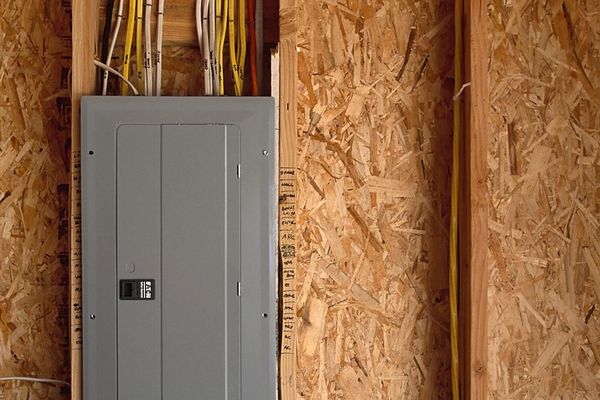Brach circuit
WHAT ARE BRANCH CIRCUIT
A home's electrical system has feeder wires that supply power to the panel and branch circuits that leave the panel to power devices. As you may know, the service feeders connect to the main breaker, which supplies power to the electrical panel for distribution. It normally is connected to a 100- or 200-amp two-pole circuit breaker, This main breaker is the main disconnect for the power supply of the breaker box enclosure.
There are also many other breakers within this circuit breaker box enclosure. These breakers vary from the common 15- and 20-amp breakers to those breakers of 100 amps or more, depending on the size of the main breaker and the load requirements that are needed on each individual circuit. These breakers also come in single- (for 120-volt circuits) and double-pole (for 240-volt applications)styles. They are the current protection devices for the circuits that feed areas, devices such as appliances, and lighting throughout your home.
These circuits are referred to as branch circuits, much like a branch on a tree is an extension of a tree. It is a part of the system and provides its individual protection of its circuit, but has ties to the main breaker. The main breaker could theoretically trips if the load across the individual branch circuit breaker became large enough due to the branch circuit's failure to trip.
This is a very limited occurance, and to date over the past 23 years or so, I've only seen this happen twice. It is good to know that there is a double safety in place.
The branch circuits are the individual electrical wire feeds that go from the branch circuit breakers to the individual electrical loads in your home.
They come complete with neutral and ground wires to give each circuit a complete path for electricity to travel and also a grounding means for electrical safety. The wire sizes to connect to these circuit breakers is determined by the electrical load rating stamped on the breaker itself. This wire size is determined by the load the branch circuit is connected to, like a 2-pole, 30-amp electric dryer. In this case you'd need a 2-pole, 30-amp breaker and 310 THHN wire to feed the electric dryer. My electrical wire chart is a good place to start in determining the appropriate wire size needed. Wire is sized by its gauge and there are numbers and letters (wire lettering) listed on the outer sheath of electrical wire that comes in many different colors, called wire color coding to tell you what type and size the wire is.
Dedicated branch circuits serve specific things.
A dedicated circuit is defined as - a circuit that serves only that appliance. These appliances include refrigerators, freezers, electric range, electric water heaters, furnaces, washers, dryers, microwaves, dishwashers, and garbage disposals. And don't forget about heat pumps, sump pumps, and air conditioners.
A good rule of thumb is that if it has a motor, it needs its own circuit.
I'd rather have too many circuits, rather than not enough! Just a look above at the trouble it can cause and the expense related to this problem that doesn't have to happen, should convince you that installing another circuit or making sure to plug into individual circuits is a must.
If you're not sure which outlet is connected to what circuit, you can simply turn off a circuit breaker or unscrew a fuse and go through your house to see which outlet, lighting circuit, or appliance is not working. Although tedious, this is a simple way to check out circuitry without using more sophisticated electrical testers that you may not have. By using something as simple as a desk lamp to plug into an outlet, you can turn circuits off one at a time until you find the right one.
If you've ever had a major appliance connected to the same circuit as another and a circuit breaker has tripped or a fuse has blown, then you understand the need for these specific circuits.




Comments
Post a Comment